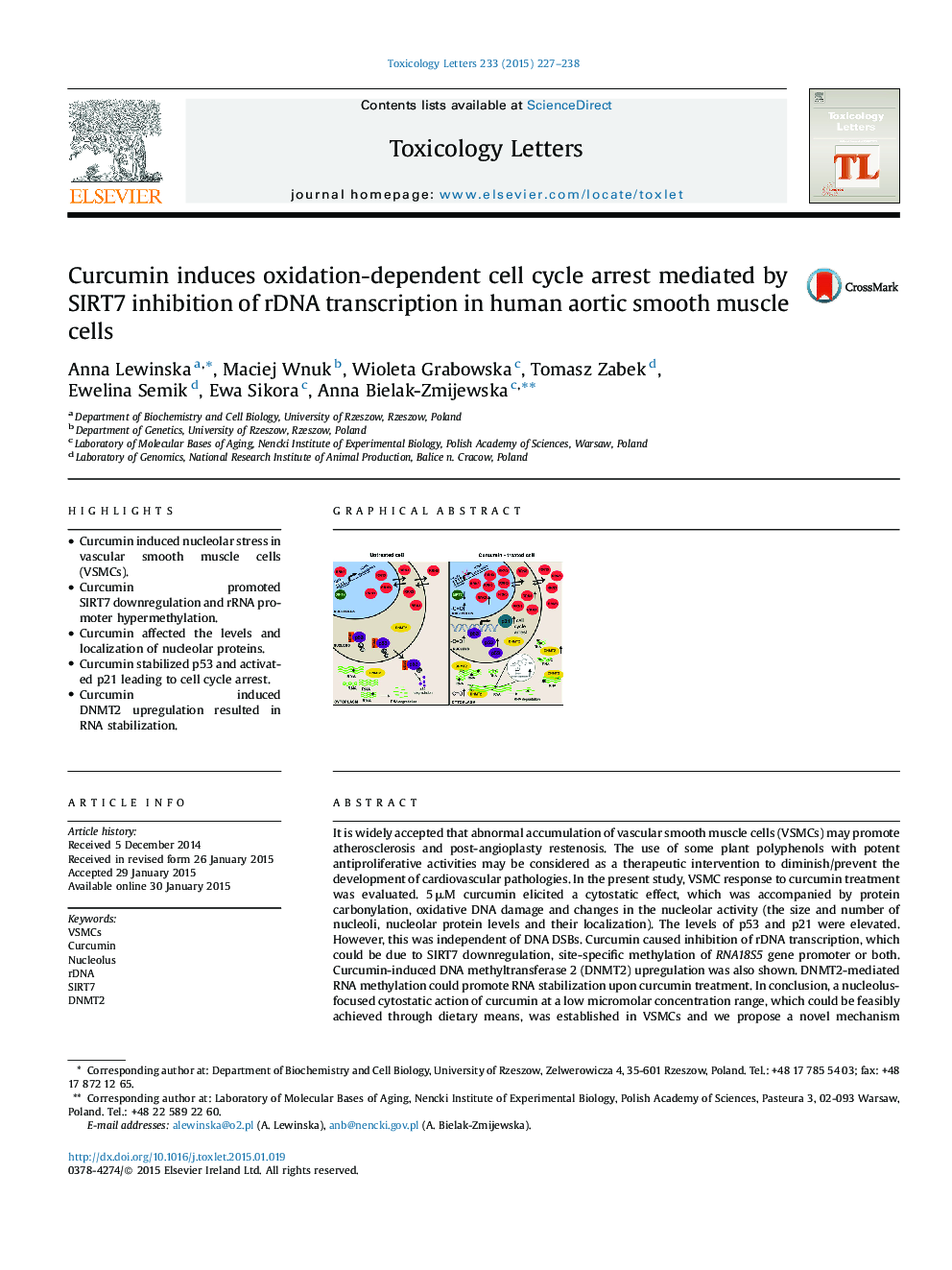| کد مقاله | کد نشریه | سال انتشار | مقاله انگلیسی | نسخه تمام متن |
|---|---|---|---|---|
| 2598876 | 1133158 | 2015 | 12 صفحه PDF | دانلود رایگان |

• Curcumin induced nucleolar stress in vascular smooth muscle cells (VSMCs).
• Curcumin promoted SIRT7 downregulation and rRNA promoter hypermethylation.
• Curcumin affected the levels and localization of nucleolar proteins.
• Curcumin stabilized p53 and activated p21 leading to cell cycle arrest.
• Curcumin induced DNMT2 upregulation resulted in RNA stabilization.
It is widely accepted that abnormal accumulation of vascular smooth muscle cells (VSMCs) may promote atherosclerosis and post-angioplasty restenosis. The use of some plant polyphenols with potent antiproliferative activities may be considered as a therapeutic intervention to diminish/prevent the development of cardiovascular pathologies. In the present study, VSMC response to curcumin treatment was evaluated. 5 μM curcumin elicited a cytostatic effect, which was accompanied by protein carbonylation, oxidative DNA damage and changes in the nucleolar activity (the size and number of nucleoli, nucleolar protein levels and their localization). The levels of p53 and p21 were elevated. However, this was independent of DNA DSBs. Curcumin caused inhibition of rDNA transcription, which could be due to SIRT7 downregulation, site-specific methylation of RNA18S5 gene promoter or both. Curcumin-induced DNA methyltransferase 2 (DNMT2) upregulation was also shown. DNMT2-mediated RNA methylation could promote RNA stabilization upon curcumin treatment. In conclusion, a nucleolus-focused cytostatic action of curcumin at a low micromolar concentration range, which could be feasibly achieved through dietary means, was established in VSMCs and we propose a novel mechanism underlying this action. We believe that our results may contribute to better understanding of the biological and pharmacological effects of curcumin on the human cardiovascular system.
Figure optionsDownload as PowerPoint slide
Journal: Toxicology Letters - Volume 233, Issue 3, 18 March 2015, Pages 227–238